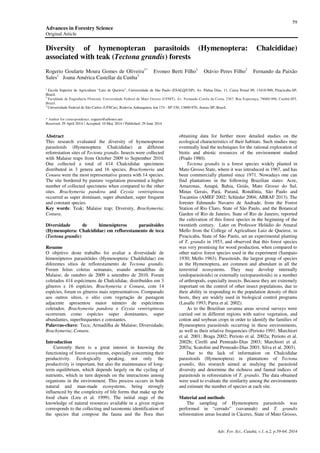This study evaluated the diversity of hymenopteran parasitoids (Hymenoptera: Chalcididae) in Tectona grandis reforestation areas in Mato Grosso, Brazil, collecting a total of 414 specimens across 3 genera and 16 species. Brachymeria and Conura were the predominant genera, with Brachymeria pandora and Ceyxia ventrispinosa being the most abundant and consistently present species. The presence of adjacent pasture vegetation correlated with higher specimen counts, highlighting the influence of environmental factors on parasitoid diversity.





